Abstract
Bile or thoracic duct lymph, collected from rats 7-9 days after suspensions of B. abortus, S. typhi or SRBC had been injected into the Peyer's patches, contained high titres of specific agglutinins. Samples of these fluids were injected i.v. into unimmunized, syngeneic recipients and the partitioning between blood and bile of the injected antibodies was studied and found to depend on the source and class of the antibody. IgA antibodies from lymph plasma disappeared rapidly from the recipients' blood and half of the dose was recovered in the bile within 2 h of its injection. IgA antibodies which had been collected from bile and so had previously traversed the liver and acquired secretory component, appeared in the recipients' bile much less rapidly so that less than half of the dose entered the bile over a period of 40 h. Passively administered IgG antibodies did not enter the recipients' bile to any significant extent and specific haemolysins never appeared in the bile after either passive or active immunization.
Full text
PDF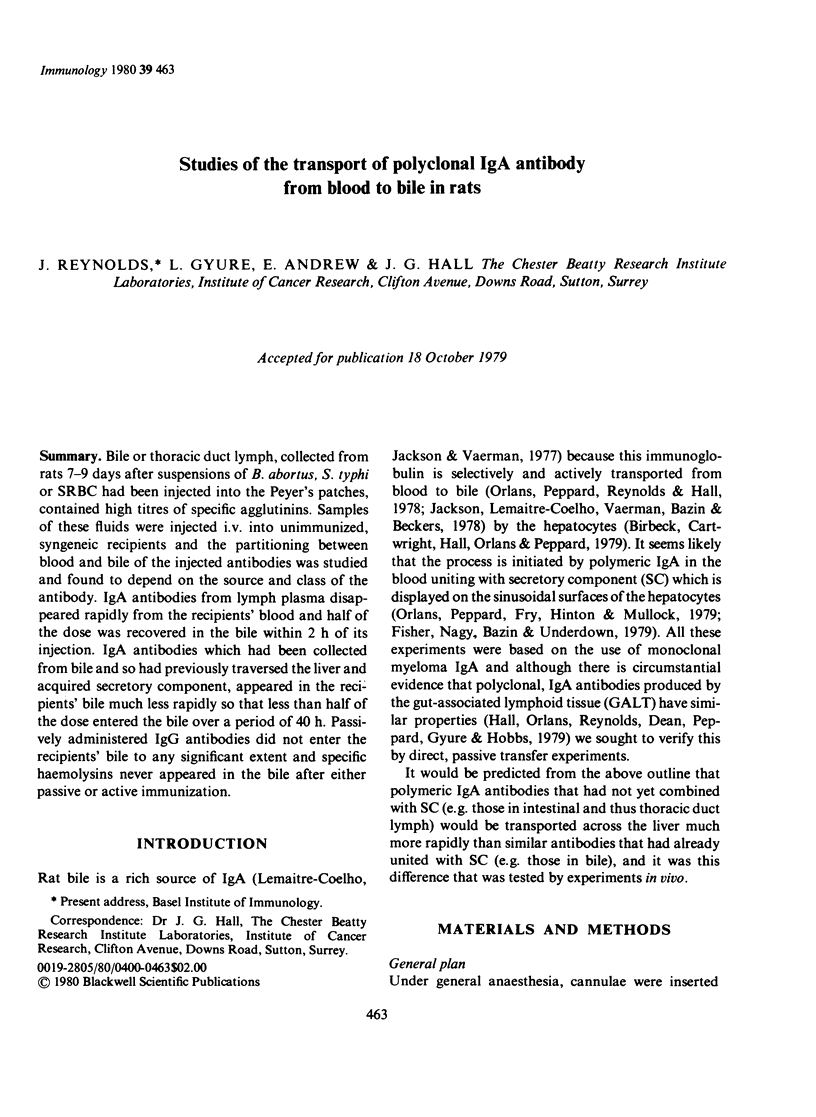
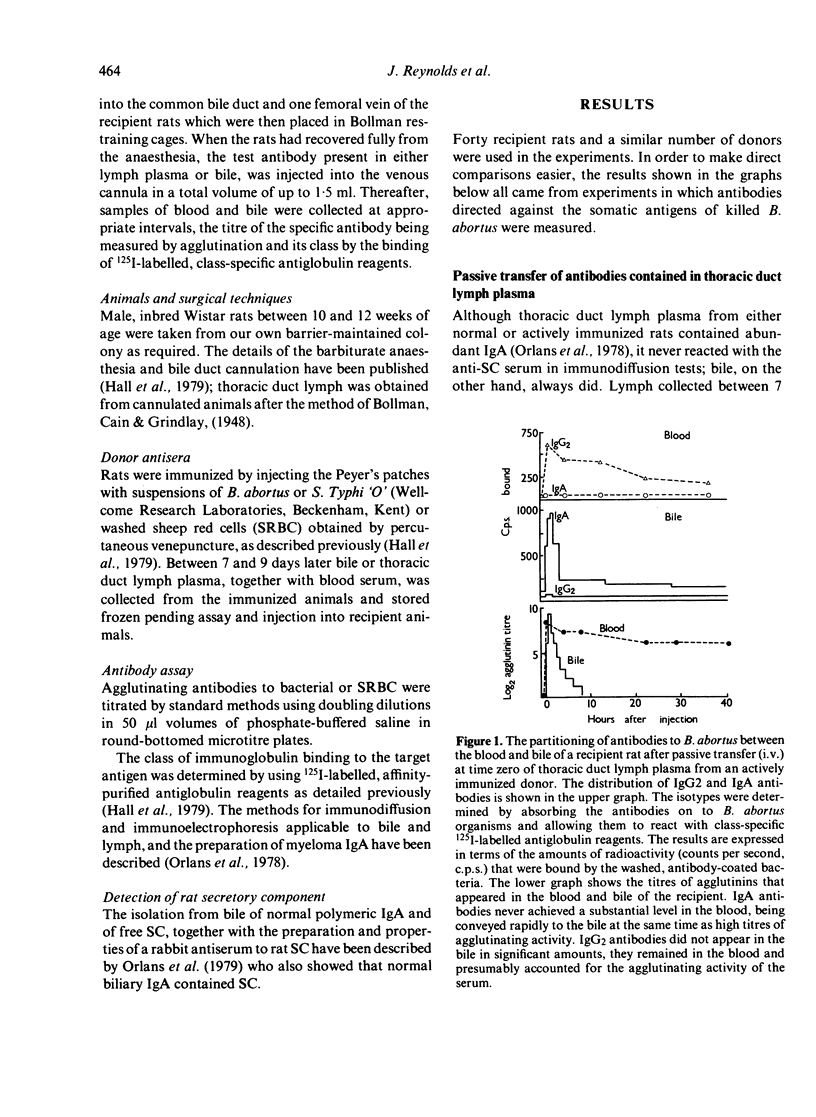
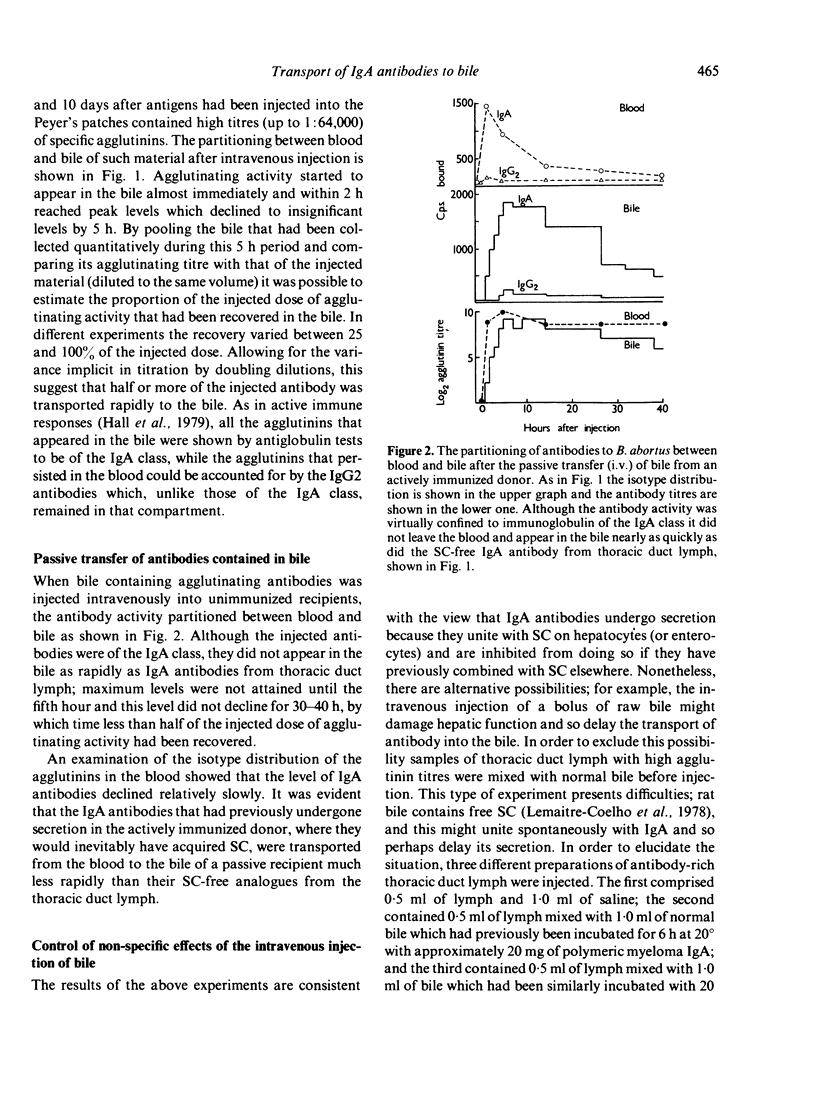
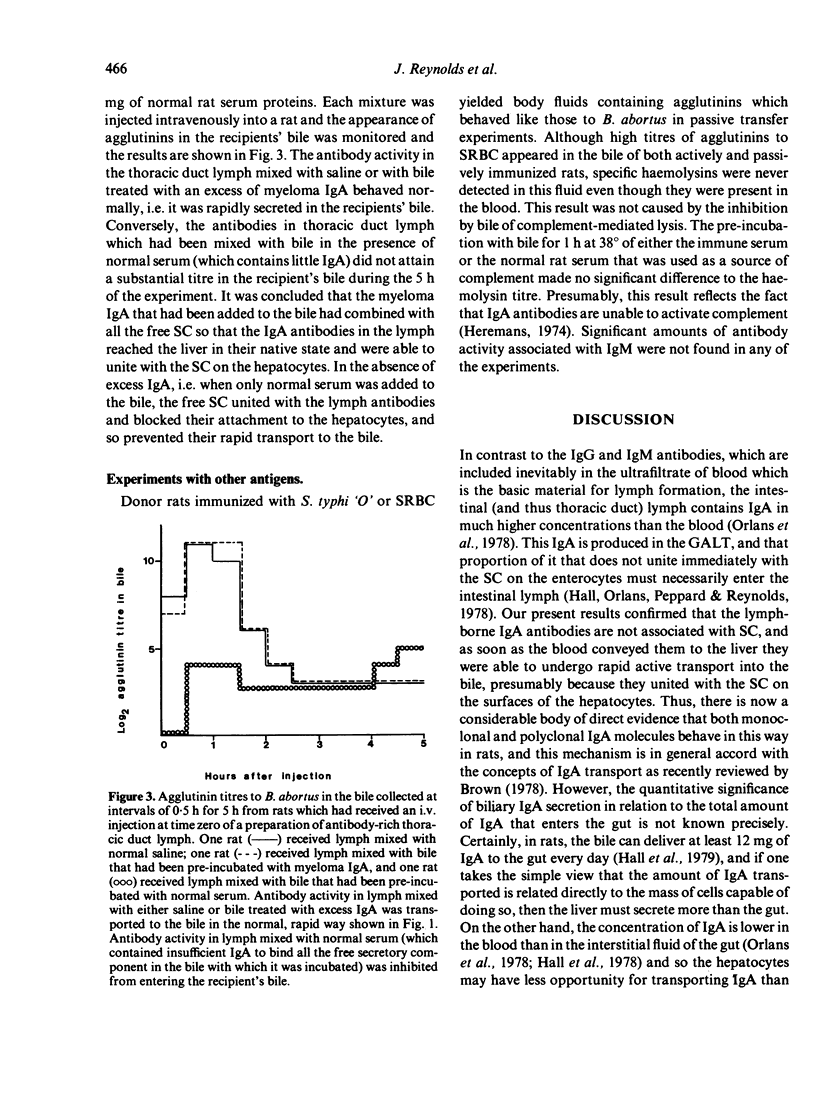
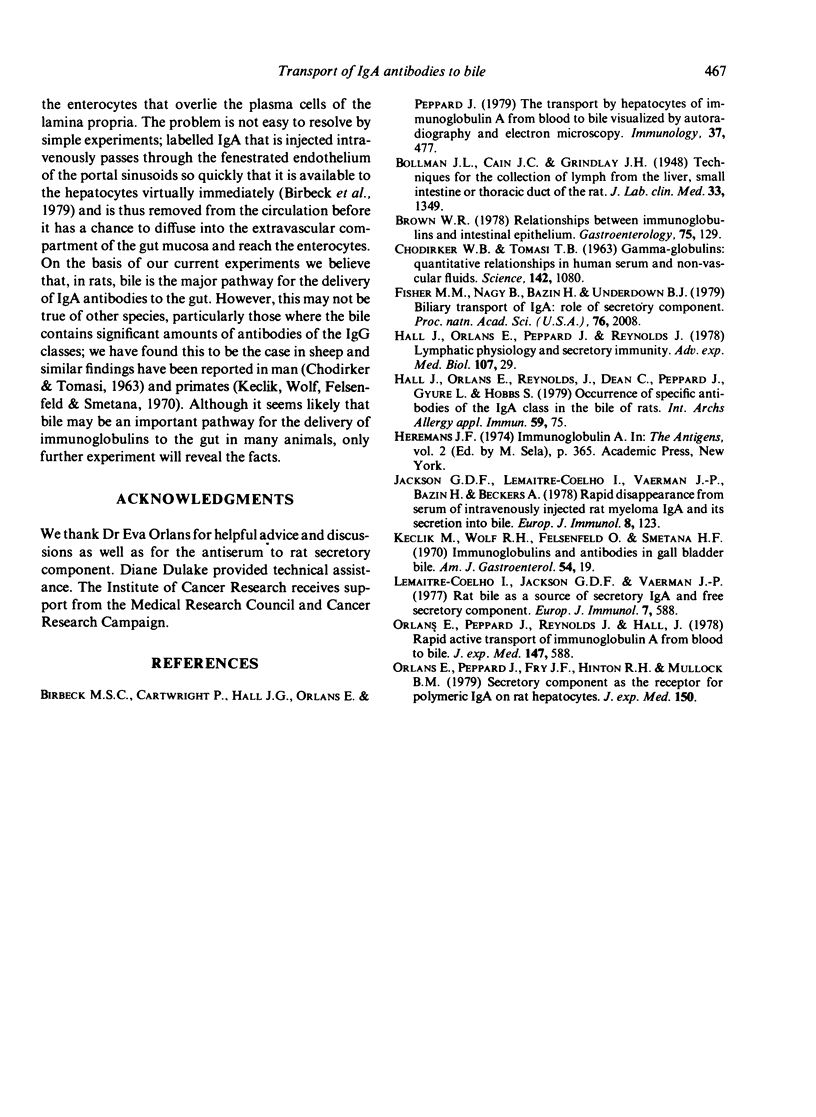
Selected References
These references are in PubMed. This may not be the complete list of references from this article.
- Birbeck M. S., Cartwright P., Hall J. G., Orlans E., Peppard J. The transport by hepatocytes of immunoglobulin A from blood to bile visualized by autoradiography and electron microscopy. Immunology. 1979 Jun;37(2):477–484. [PMC free article] [PubMed] [Google Scholar]
- Brown W. R. Relationships between immunoglobulins and the intestinal epithelium. Gastroenterology. 1978 Jul;75(1):129–138. [PubMed] [Google Scholar]
- CHODIRKER W. B., TOMASI T. B., Jr GAMMA-GLOBULINS: QUANTITATIVE RELATIONSHIPS IN HUMAN SERUM AND NONVASCULAR FLUIDS. Science. 1963 Nov 22;142(3595):1080–1081. doi: 10.1126/science.142.3595.1080. [DOI] [PubMed] [Google Scholar]
- Fisher M. M., Nagy B., Bazin H., Underdown B. J. Biliary transport of IgA: role of secretory component. Proc Natl Acad Sci U S A. 1979 Apr;76(4):2008–2012. doi: 10.1073/pnas.76.4.2008. [DOI] [PMC free article] [PubMed] [Google Scholar]
- Hall J., Orlans E., Peppard J., Reynolds J. Lymphatic physiology and secretory immunity. Adv Exp Med Biol. 1978;107:29–34. doi: 10.1007/978-1-4684-3369-2_4. [DOI] [PubMed] [Google Scholar]
- Hall J., Orlans E., Reynolds J., Dean C., Peppard J., Gyure L., Hobbs S. Occurrence of specific antibodies of the IgA class in the bile of rats. Int Arch Allergy Appl Immunol. 1979;59(1):75–84. doi: 10.1159/000232242. [DOI] [PubMed] [Google Scholar]
- Jackson G. D., Lemaître-Coelho I., Vaerman J. P., Bazin H., Beckers A. Rapid disappearance from serum of intravenously injected rat myeloma IgA and its secretion into bile. Eur J Immunol. 1978 Feb;8(2):123–126. doi: 10.1002/eji.1830080210. [DOI] [PubMed] [Google Scholar]
- Keclik M., Wolf R. H., Felsenfeld O., Smetana H. F. Immunoglobulins and antibodies in gallbladder bile. Am J Gastroenterol. 1970 Jul;54(1):19–29. [PubMed] [Google Scholar]
- Lemaître-Coelho I., Jackson G. D., Vaerman J. P. Rat bile as a convenient source of secretory IgA and free secretory component. Eur J Immunol. 1977 Aug;7(8):588–590. doi: 10.1002/eji.1830070818. [DOI] [PubMed] [Google Scholar]
- Orlans E., Peppard J., Reynolds J., Hall J. Rapid active transport of immunoglobulin A from blood to bile. J Exp Med. 1978 Feb 1;147(2):588–592. doi: 10.1084/jem.147.2.588. [DOI] [PMC free article] [PubMed] [Google Scholar]


